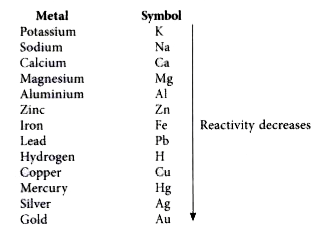Three different galvanic cells are illustrated below.
Hints: A, B and Care metals, the symbols are not real)
a) Identify the cathode in cell 1?
b) In cell 2, identify the electrode in which oxidation take place? Write the chemical equation this reaction.
c) Arrange the metals A, B and C in the decreasing order of their reactivity.
'(##VPU_TTT_CHE_X_P01_C03_E06_004_Q01##)'
a) B b ) C , C−2e→C2+ c) B,C,A
Topper's Solved these Questions
Similar Questions
In the galvanic cell Cu∣∣Cu2+∣∣∣∣Ag+∣∣Ag, the electrons flow from Cu- electrode at Ag- electrode. Answer the following questions regarding this cell:
(a). Which is the anode?
(b). Which is the cathode?
(c). What happends at anode-reduction or oxidation?
(d). What happens at cathode-oxidation or reduction?
(e). Which electrode loses mass?
(f). Which electrode gais mass?
(g). white the electrode reaction.
(h). Write the cell reaction.
(i). Which metal has greater tendency to loss electron-Cu or Ag?
(J) Which is the more reactive metal Cu or Ag?
(k). What is the function of salt bridge represented by the symbol||?
View SolutionIn the galvanic cell Cu∣∣Cu2+∣∣∣∣Ag+∣∣Ag, the electrons flow from Cu- electrode at Ag- electrode. Answer the following questions regarding this cell:
(a). Which is the anode?
(b). Which is the cathode?
(c). What happends at anode-reduction or oxidation?
(d). What happens at cathode-oxidation or reduction?
(e). Which electrode loses mass?
(f). Which electrode gais mass?
(g). white the electrode reaction.
(h). Write the cell reaction.
(i). Which metal has greater tendency to loss electron-Cu or Ag?
(J) Which is the more reactive metal Cu or Ag?
(k). What is the function of salt bridge represented by the symbol||?
View Solution
Knowledge Check
Most of the metals react chemically with other substances in one form or another. Few metals which do not react with common chemicals are called noble metals e.g., silver, gold, platinum. The rate of reaction with which metals react is not same for all the metals. The rate of reaction depends on the reactivity of metals. On the basis of their reactive nature, a series known as reactivity series has been drawn in which metals are arranged in decreasing order of their reactivity.

Observe the table given below:

= reaction takes place
= reaction does not take place
Identify the correct order of reactivity of the given metals.AX<Z<YBZ<X<YCX>Z>YDY<X<WThe oxidation potential values of A,B,C and D are -0.03 V + 0.18 V-0.07 and +0.1 v respecitively the non spontaneous cell reaction takes place between
AA and BBB an DCD and ADB and CThe reduction potentials for the +2 cations, e.g.
A2++2e−→A,
of four metals decrease in the order A, B,C,D, which Statements is/are true?
(P) A reduces B2+ oxidizes C
(Q) B2+ oxidizes C
(R ) B oxides DAQ onlyBR onlyCP and Q onlyDP and R only
